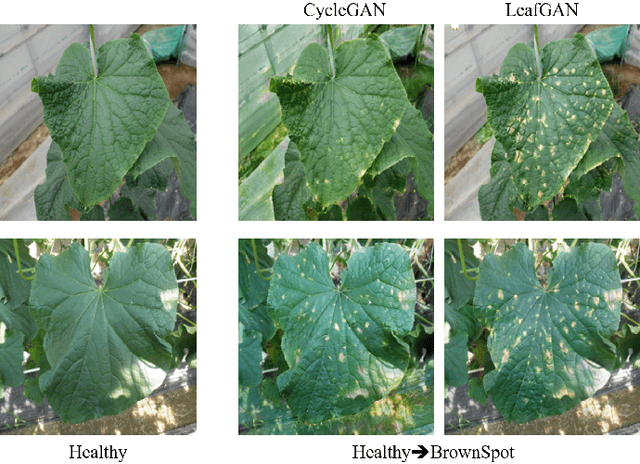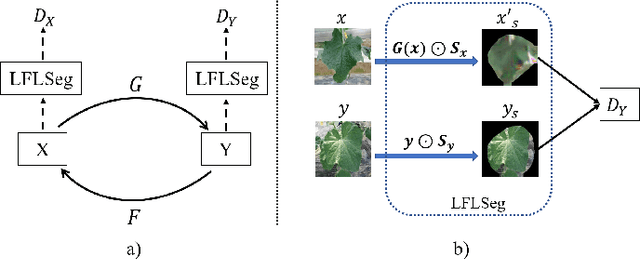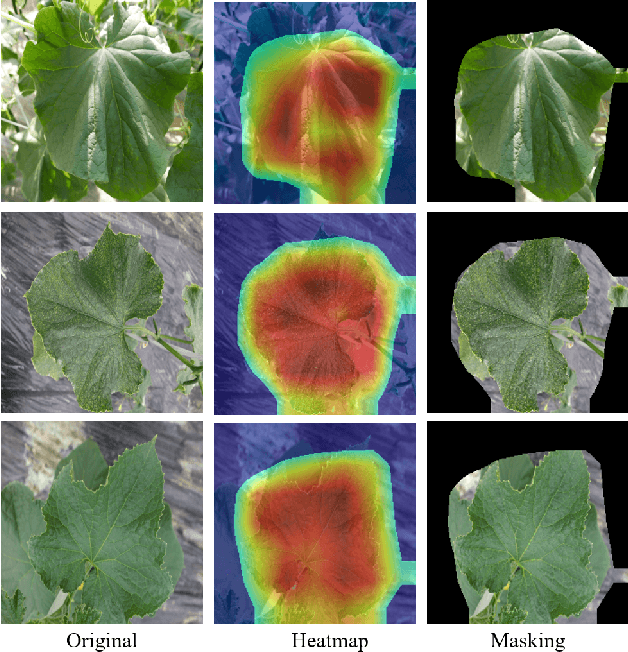LeafGAN: An Effective Data Augmentation Method for Practical Plant Disease Diagnosis
Paper and Code
Feb 24, 2020



Many applications for the automated diagnosis of plant disease have been developed based on the success of deep learning techniques. However, these applications often suffer from overfitting, and the diagnostic performance is drastically decreased when used on test datasets from new environments. The typical reasons for this are that the symptoms to be detected are unclear or faint, and there are limitations related to data diversity. In this paper, we propose LeafGAN, a novel image-to-image translation system with own attention mechanism. LeafGAN generates a wide variety of diseased images via transformation from healthy images, as a data augmentation tool for improving the performance of plant disease diagnosis. Thanks to its own attention mechanism, our model can transform only relevant areas from images with a variety of backgrounds, thus enriching the versatility of the training images. Experiments with five-class cucumber disease classification show that data augmentation with vanilla CycleGAN cannot help to improve the generalization, i.e. disease diagnostic performance increased by only 0.7% from the baseline. In contrast, LeafGAN boosted the diagnostic performance by 7.4%. We also visually confirmed the generated images by our LeafGAN were much better quality and more convincing than those generated by vanilla CycleGAN.
 Add to Chrome
Add to Chrome Add to Firefox
Add to Firefox Add to Edge
Add to Edge